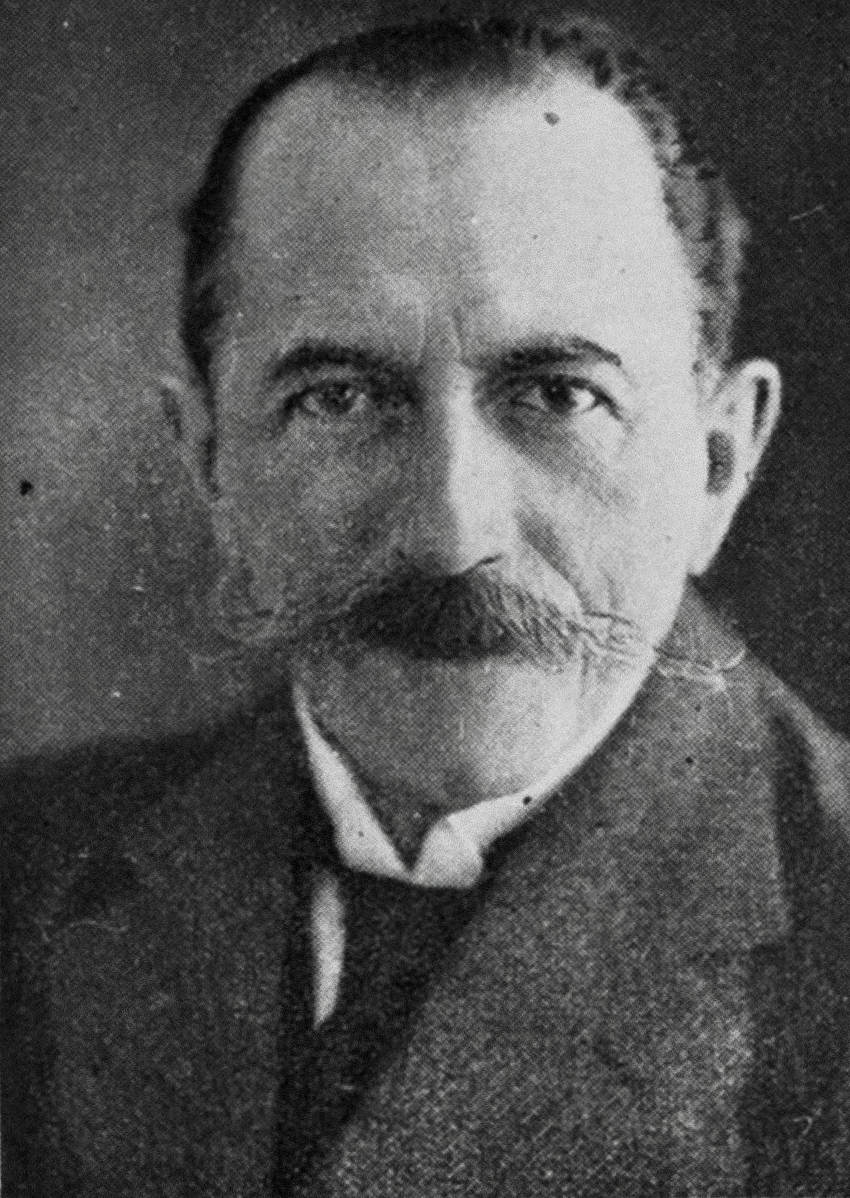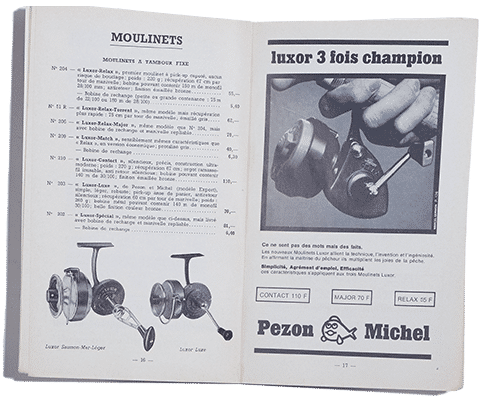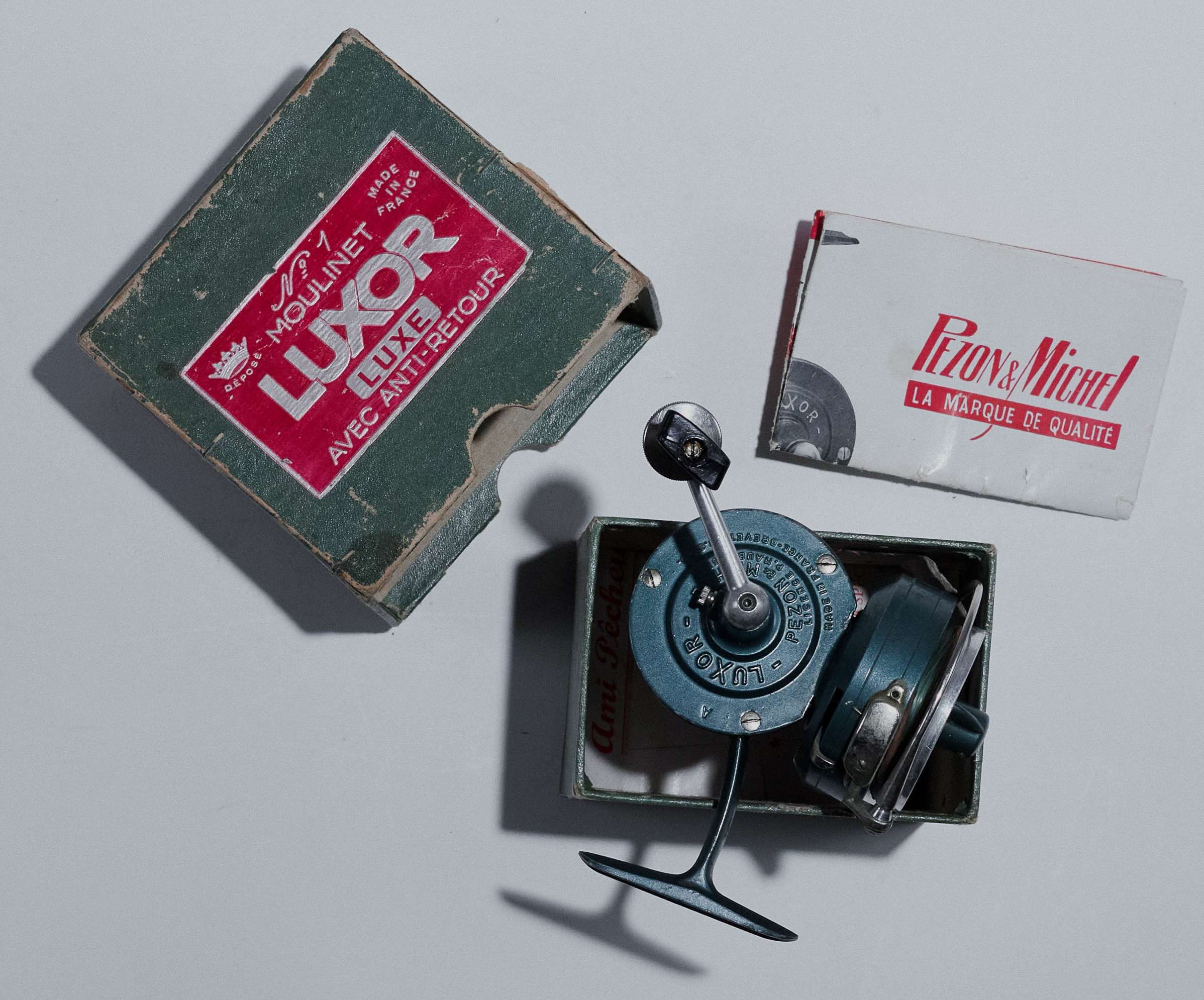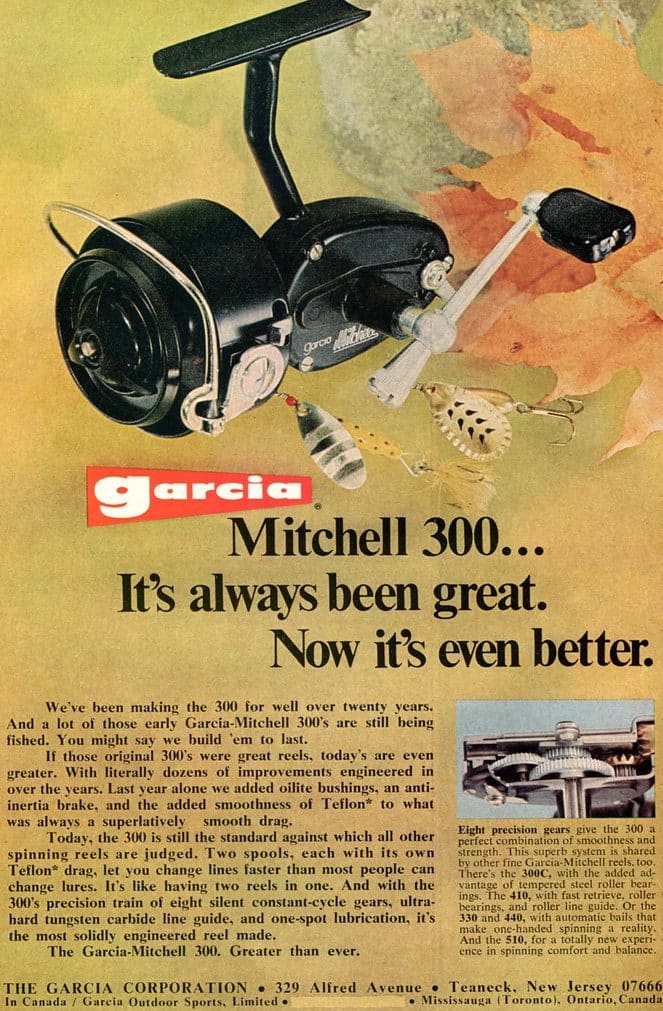
Collectible fixed spool reels
Collectible fixed spool reels

Before 1930, only small copper or brass reels existed on the French market, which can be found today in flea markets or at garage sales, and at the time in entire pages of Manufrance catalogs.

The American Shakespeare company was the first to build a fixed spool reel without a pick-up.
Since the middle of the 19th century, the progress of small metallurgy, especially in England, had allowed the manufacture of reels all in copper of reduced size. Imported from the other side of the Channel, these models were very primitive in their design and had no braking system, a simple coarse pawl ensuring the unwinding of the reel. They also had no line guide and their poorly adjusted flanges frequently jammed the line between the spool and the cage.
To fish carp in ponds or pike on the live stream, these machines were only used as a line reserve and in no case to cast.
For the gentlemen of the city who fished trout or salmon with devon, there were reels with quadruple recovery imported from America, called “for fishing with the American casting”. But these reels were expensive and when they were not used under the control of expert hands, it was the end of the fishing party.

The Shakespeare brand casting reels, with rotating spool and multiplier recovery, with a line guide that distributes the line on the spool, were produced in dozens and dozens of models, in several different sizes for each model. Over the course of more than thirty years, millions of these reels were sold, which is far from the case with their fixed spool reel production.
Unlike the fly reels, the most sought-after “fixed spool reels” are French.
And then, towards the end of the thirties, arrived in mass on the market, the first models of reels known as “fixed spool”. In fact, these reels, whose principle was based on the fact that the line was not unwound during the casts, from a spool turning on its axis, but “at the end” from a fixed spool (drum), revolutionized all the fishing techniques, especially those requiring the use of light lures.
The principle was invented in 1905 by Viscount Henri de France, who was an expert casting competitor on both sides of the English Channel, where French and British casters enjoyed this very chic sport on the lawns of the Bois de Boulogne.

Viscount Henry de France, real inventor with his "can of peas", of the ancestor of the fixed spool reel.

With this more than rudimentary "reel", Henry de France won several international "weight distance" events.

We see him here, with his "can of peas" transformed into a fixed spool reel, at the international championship at the Cercle du Tir aux pigeons du Bois de Boulogne, during a competition.
History records that with an empty tin can containing peas, around which he wound the gut or braided silk thread with a small boot hook, and which he fixed to the handle of his rod with a metal bent foot fixed to the unopened bottom of the can, the viscount won all the throwing events that year, both in distance and in accuracy. However, it was not until about thirty years later that more sophisticated fixed reel models, more or less as we still know them today, appeared on the market.
Marketed by Pezon and Michel, the Luxor have revolutionized casting.

Left page: two "classic" Luxor reels with pickup, right page: the Luxor Relax with no apparent pickup, with hooded drum.
And there, for once, it was not models imported from England or the United States, but of French manufacture. In the wake of Viscount Henri de France, many engineers and craftsmen in our country developed this type of reel. Here again, we find Pezon et Michel who, for three decades, marketed the production of an engineer of genius, Mr Mauborgne, under the name of “Luxor”. In all four models, with variations in recovery speed, to launch from ultra-light to almost all-big. The most fantastic: the Luxor Supreme, which even then (1955) was too expensive to produce and was soon discontinued.

More than 80 years old, the Luxor Luxe is still used today for trout or carnivorous fish (perch, pike, zander...). Personally I prefer it to all the modern "japanese" with eight, ten or twelve ball bearings.

Surely the most sold reel in the world: the Mitchell 300 manufactured at the Cluses factory (Haute Savoie), and distributed by the Garcia company in the United States.
Other brands and especially small craftsmen (mechanics, fitters, garage owners) created and marketed small series, which are very much in demand today: Vamp, Capta, Croizix, Huillet, Centaur, Punch, Fraser, Aiglon…. practically all these brands, patented before the war, found their full development and public immediately after the end of the hostilities in 1945 and in the 1950s and 1960s.
And how, here, not to mention the house Mitchell, which as its name does not indicate, is well French and not American. It was immediately after the war that the famous 300 model, the most sold reel in the world, came out of the Savoyard workshops in Cluses.
In 1961 the 5,000,000th reel was celebrated, in 1966 the 10,000,000th and in 1971 the 20,000,000th. Across the Atlantic, the success of the Mitchell 300 is such that the American distributor buys the French company, whose production will continue to be made in Savoie until the early 80s. Then the South Asian competition became fierce and the marvels of precision and gears assembled in the Savoyard valleys could no longer fight against the flood of cheap Japanese, Korean and now Chinese brands.
The first reels
As for many objects, it seems that the Chinese were the first to invent fishing reels. An engraving from the 10th century even shows one of these devices with a crank directly mounted on a fishing rod.
In Europe, it was only seven or eight centuries later that some kind of wooden winches appeared in England, not attached to the rod but to a wooden plate, carried by a servant or a young boy (school was not compulsory and it was better to be on the banks of a Scottish river than in a Welsh mine shaft), whose job was to give or take the line according to the fisherman’s instructions.
These big “reels” were in fact used as a line reserve to fish for salmon, carp or big pike, a pastime already highly appreciated by the nobles in the British Isles towards the end of the 17th century.
In France, the first representation of a reel appears in the “Pêcheur français” by Kresz Ainé, published in Paris in 1818.



